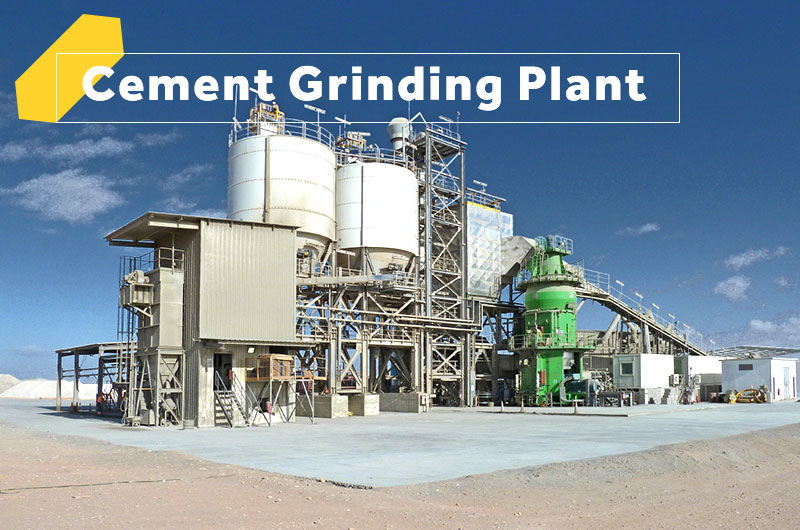Recently, the number of cement grinding stations (also called clinker grinding plants) in many countries, especially developing countries, have been growing at an astonishing speed.
The reasons for the rapid development of cement grinding stations are as follows:
1. The rapid development of the new dry cement-manufacturing method and the disorderly sales of the clinker has contributed to the flooding of cement grinding station;
2. The elimination, closure, and transformation of cement plants with outdated capacity have promoted the development of grinding stations;
3. The building of a cement grinding station does not need high investment and is low-tech, it is easier to popularize.
Under the trend of rapid development of cement grinding station, more new technologies are adopted in its design and construction, and many new features are shown in the following aspects:
The location of the cement grinding station
Most of the mixed materials in cement grinding stations are industrial waste slag, making it an important industry to absorb urban industrial waste slag. If the cement grinding station and clinker production line are set near the limestone mine, unnecessary transportation expenses of cement mixture will be incurred. Therefore, the cement grinding station is built near the sales area, which can save about 40% of the freight.
Improved cement grinding technology
Cement grinding has always been the most power-consuming part of cement production. The cement ball mill in the cement grinding station mainly has two functions: crushing and grinding of materials, and the efficiency of the crushing function is very low.
Therefore, many cement grinding stations now use roller press for pre-crushing, that is, roller press + ball mill technology. The application of roller press not only makes the materials easy to grind, but also makes the cement mill only grind, which greatly improves the production capacity of the cement ball mill.
The pre-crushing system must be closed-circuit, which is very vital! Some cement grinding stations also apply roller press, but they end up with the same output and more power consumption. The wrong choice of a circuit of pre-crushing system is the reason.
After rolling, the materials must be graded and dispersed. In this way, it can be ensured that the fine particles less than 2mm enter the mill, most of which are powdery materials, and the coarse particles return to the roller press for rerolling. If no disperser is equipped to form a closed-circuit system, the extra workload of the cement mill caused by coarse particles will still exist.
Separate grinding of the mixture
Now the newly designed cement grinding station not only tends to be large-scale but also begins to consider grinding slag alone.
Due to the different properties, it is difficult to grind admixtures like slag. If they are mixed with cement and ground together, the phenomenon of insufficient grinding of slag will occur. When the specific surface area of cement is ground to 400-420m2/kg, the specific surface area of slag has not reached 380m2/kg. If the specific surface area of the slag is lower than this figure, it means that its activity has not been stimulated.
Last but not least, after the cement grinding equipment is enlarged, the owner of the cement grinding station must realize that the days when a cement grinding mill is a cement grinding station are over.
Therefore, a professional cement grinding design team must be invited to carry out design planning to ensure the efficient operation of the cement grinding station.

